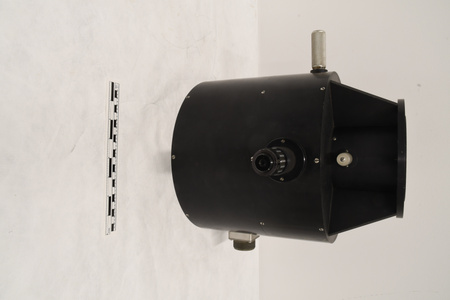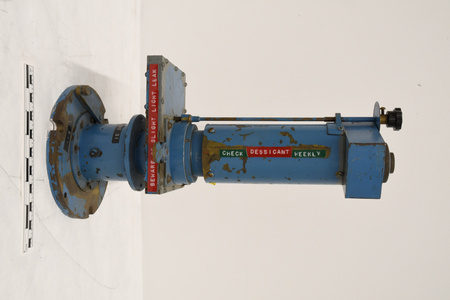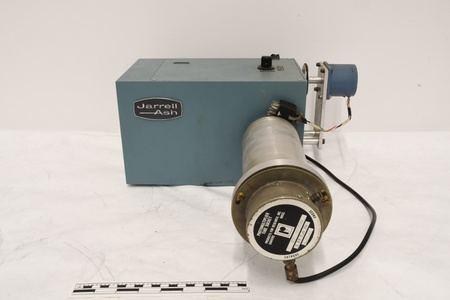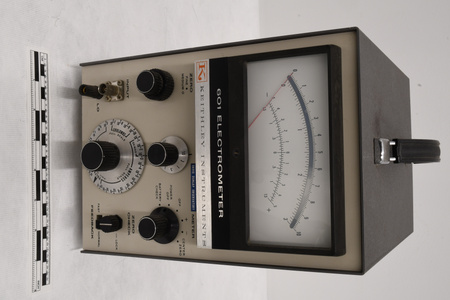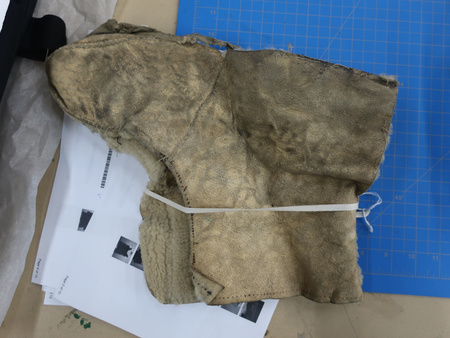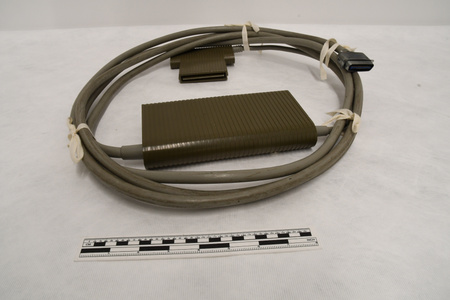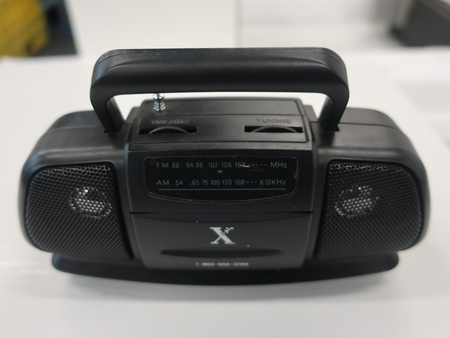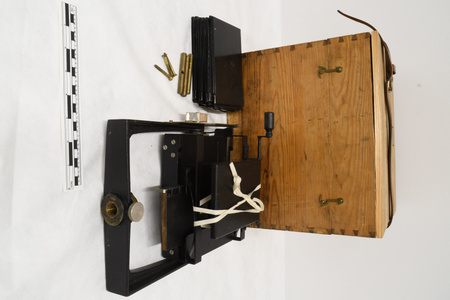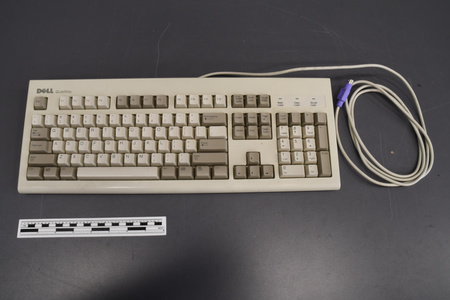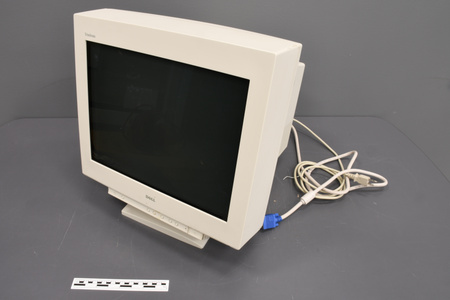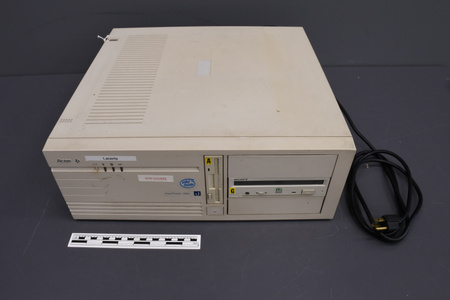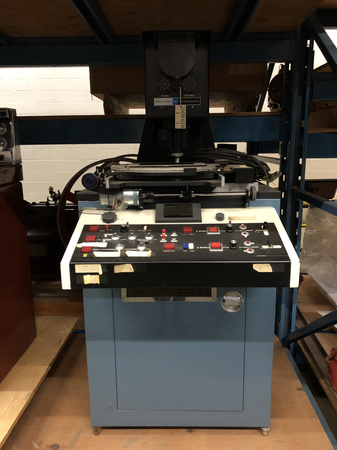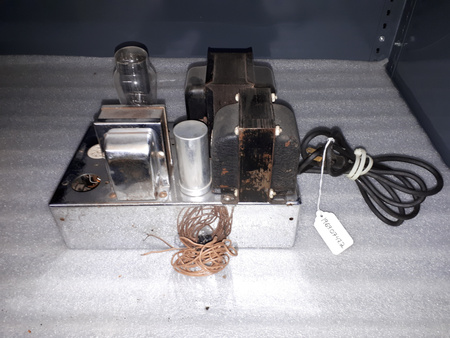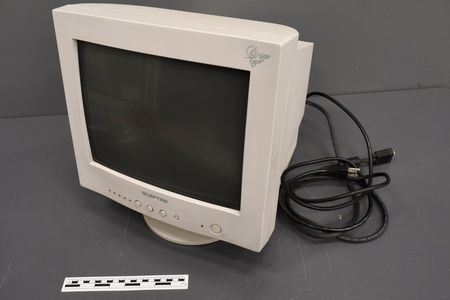Bloc d'alimentation
Utiliser cette image
Puis-je réutiliser cette image sans autorisation? Oui
Les images sur le portail de la collection d’Ingenium ont la licence Creative Commons suivante :
Copyright Ingenium / CC BY-NC-ND (Attribution-NonCommercial 4.0 International (CC BY-NC 4.0)
ATTRIBUER CETTE IMAGE
Ingenium,
2008.0199.001
Permalien:
Ingenium diffuse cette image sous le cadre de licence Creative Commons et encourage son téléchargement et sa réutilisation à des fins non commerciales. Veuillez mentionner Ingenium et citer le numéro de l’artefact.
TÉLÉCHARGER L’IMAGEACHETER CETTE IMAGE
Cette image peut être utilisée gratuitement pour des fins non commerciales.
Pour un usage commercial, veuillez consulter nos frais de reproduction et communiquer avec nous pour acheter l’image.
- TYPE D’OBJET
- S/O
- DATE
- Inconnu
- NUMÉRO DE L’ARTEFACT
- 2008.0199.001
- FABRICANT
- Products for Research Inc.
- MODÈLE
- TE-206TSRF
- EMPLACEMENT
- Danvers, Massachusetts, United States of America
Plus d’information
Renseignements généraux
- Nº de série
- 13374-86
- Nº de partie
- 1
- Nombre total de parties
- 1
- Ou
- S/O
- Brevets
- S/O
- Description générale
- Metal casing, switch and parts/ Synthetic ammeter casing, controls and parts/ Rubber? feet/ Synthetic cable coverings with metal connectors
Dimensions
Remarque : Cette information reflète la taille générale pour l’entreposage et ne représente pas nécessairement les véritables dimensions de l’objet.
- Longueur
- 36,0 cm
- Largeur
- 20,5 cm
- Hauteur
- 10,0 cm
- Épaisseur
- S/O
- Poids
- S/O
- Diamètre
- S/O
- Volume
- S/O
Lexique
- Groupe
- Astronomie
- Catégorie
- Divers
- Sous-catégorie
- S/O
Fabricant
- Ou
- Products
- Pays
- United States of America
- État/province
- Massachusetts
- Ville
- Danvers
Contexte
- Pays
- Canada
- État/province
- Ontario
- Période
- Inconnu
- Canada
-
A piece of equipment used at the David Dunlap Observatory at the University of Toronto, one of Canada's most important astronomical observatories. The David Dunlap Observatory opened in 1935 as the result of a bequest from the wife of David Dunlap. The telescope was a 74 inch (188 cm) reflector built by Grubb Parsons of Newcastle-upon-Tyne in England. The 74 inch was then the largest telescope in Canada (surpassing the 72 inch telescope of the Dominion Astrophysical Observatory in Victoria) and became the second largest in the world after the 100 inch Hooker Telescope of the Mt. Wilson Observatory outside Los Angeles. DDO's reputation grew and following WWII, it began to graduate most of the astronomers produced in Canada with University of Western Ontario far behind. Beginning in the 1960s a number of other astronomy departments were created but UofT/DDO held its place, a position it probably still holds. The DDO had a good technical staff which gave them an advantage and, with most of the 1940s to early 1970s top astronomers coming from UofT, grants from NRC and then ENSERC were almost guaranteed and allowed UofT's top astronomers -- Hogg, van den Berg, Fernie, Bolton, Kamper, Martin, etc. to acquire or build some of the best equipment available in university observatories. For optical observatories, only the DAO had technical staff and budgets that surpassed those of DDO. In 2007, citing increasing light pollution, the University of Toronto announced plans to sell the Observatory property. In June 2008, it was sold to Corsica Development Inc., a subsidiary of Metrus Development Inc. and the Observatory was closed. In 2009 the Observatory buildings and 80% of the site were designated a cultural heritage landscape. Also in 2009 Corsica and the Royal Astronomical Society of Canada, Toronto Centre announced an agreement allowing the RASC to provide public education and outreach programs at the observatory, and to operate the 188 cm telescope. - Fonction
-
A device used to control the temperature of the refrigerated chamber which cools the photomultiplier tube of an astronomical photometer. - Technique
-
A piece of accessory equipment used by Dr. Don Fernie with one of his photometers. This controls the temperature of the refrigerated chamber -- typically -40 C. The reason is that photo-multiplier tubes are more efficient the colder they are and more stable. The tubes most frequently used were RCA tubes. - Notes sur la région
-
Inconnu
Détails
- Marques
- Black lettering on front reads 'PRODUCTS FOR RESEARCH, INC./ 88 HOLTEN STREET, DANVERS, MASSACHUSETTS 01923/ MADE IN U.S.A.'/ Label on back reads 'Power Supply/ MODEL TE-206TSRF/ 115 v 50/60 Hz 200 Watt/ Ser. No. 13374-86/ PRODUCTS FOR RESEARCH, INC./ 88 Holten St., Danvers, Mass./ Made in U.S.A.'/ Black lettering for control functions/ Black ammeter scale and markings
- Manque
- Appears complete
- Fini
- Textured ivory painted casing front, top and back; textured black painted casing sides and underside/ Brushed metal front control panel with plated switch, black knob and black part/ Black ammeter casing with white face and colourless transparent cover/ Black feet/ Grey cable coverings, gold coloured connectors
- Décoration
- Red and black PR logos on front and ammeter face
FAIRE RÉFÉRENCE À CET OBJET
Si vous souhaitez publier de l’information sur cet objet de collection, veuillez indiquer ce qui suit :
Products for Research Inc., Bloc d'alimentation, Date inconnue, Numéro de l'artefact 2008.0199, Ingenium - Musées des sciences et de l'innovation du Canada, http://collection.ingenium.ca/fr/id/2008.0199.001/
RÉTROACTION
Envoyer une question ou un commentaire sur cet artefact.
Plus comme ceci




